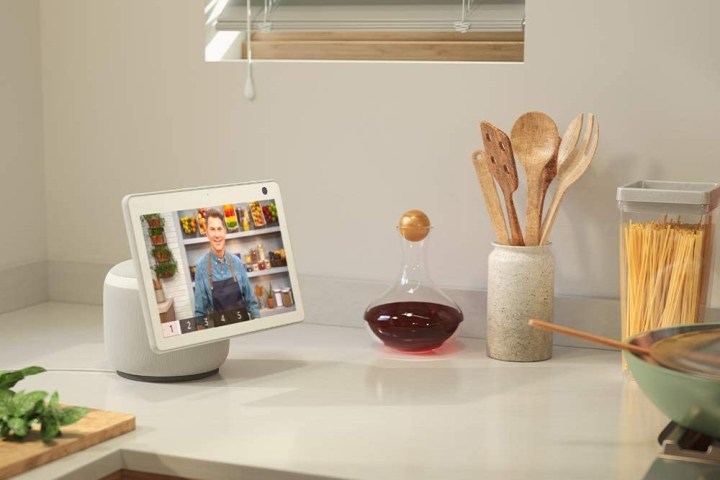When we were kids, we imagined the smart home of the future would have silent but friendly robot butlers, magic ovens that opened to roll out a fully cooked meal, and flying cars. We’re still waiting for most of that to become truly tangible, but smart homes have come a long way from the limited utility of The Clapper.
Smart homes today are automated and can execute any number of tasks without input or button pressing from us humans: we have our lights set on schedules that align to sunrise and sunset, our smart home hubs talk to us and deliver news, weather, and traffic information. Our smart thermostats can detect when we’re home or not and lower the temperature to save energy. Even so, most smart homes still do require maintenance, upkeep, and adjustments to those schedules in order to keep things running smoothly. But one aspect of the smart home is being under-utilized and could help our smart homes operate even more cleverly and efficiently: the motion detector.

Motion detectors are underutilized
Motion detectors as part of smart homes are not a new idea. Philips Hue has had motion detectors as part of its lighting system for years, allowing lights to come on when you approach. Ring has motion detectors as part of its home security system so cameras can begin recording or security lighting can illuminate an area, and motion sensors in a Nest Smart Thermostat can tell the device you’re home and to keep the temperature comfortable. But in my opinion, motion detectors should be part of almost every smart home gadget.
For the most part, motion detectors are always add-on gadgets. They are purchased at an extra cost and designed to be placed somewhere in a room to trip actions in the associated smart home products. But what if motion detectors were built into more devices? What if our smart home hubs all had motion detectors built in that could help us fine-tune actions?
Why don’t our smart home hubs utilize motion detection better?
Google’s newer Nest Home Hub is equipped with a motion detector for its Sleep Sensing function and for some simple gesture controls, but in my experience with it, I was not able to link this operation to get it to turn the lights on when I enter the bedroom, as one example. That seems like a missed opportunity.
Some smart home hubs like Amazon Echo Show 15 now have cameras that recognize individuals and can provide customized screen responses (showing you your to-do list or your appointments for the day), but they aren’t set up to trigger smart home actions when they see you. There’s no easy way, for example, to have the lights in the kitchen come on when the Show 15 sees you. Motion sensors could be put into smart home hubs to help trigger actions we want, without the need for an additional sensor, particularly as more of us add these hubs and home centers to every room.

Some smart motion detection is happening
I will say this trend is starting to emerge. Amazon’s Echo Show 10, for example, uses motion sensors to trigger Occupancy Routines, where the Show 10 in your office would detect the movement of you coming into the room and could turn on your decorative Nanoleaf lighting panels as well as the overhead light (or a task lamp), start your ambient-at-work music playlist, and trigger your Amazon smart plug to turn on a fan or air purifier.
Most motion detection is brand-specific
As it is, many motion sensors are tied to specific products. My Philips Hue motion sensor could only trigger my Philips Hue lights; it does not and cannot initiate actions from other devices. As our smart home hubs like Google Nest Home Hub and Amazon Echo Show devices are able to interact with multiple brands and devices and create clever multi-gadget smart home Routines, it would be great if there’s an opportunity to extend this functionality to presence and motion sensing to more devices.
Never mind motion sensing, geofencing will save us… right?
Perhaps you’re thinking all this is redundant with the advent of geofencing. Geofencing uses a smartphone’s GPS and location info to detect our arrival and departure from geographic locations, making motion sensors kind of obsolete, right? Not quite.
While geofencing can be great for larger-scale operations (things like having your home’s inside lights turn on when you turn on to your street, for example) most geofencing operations are not equipped to manage the nitty-gritty of your movement inside of your home. Not to mention that most of us don’t have our smartphones in our hands or pockets at all times as we move around inside the house. Therefore, geofencing is ill-equipped to trigger the bathroom lights to come on when someone enters, for example.
That brings us back to motion detectors. Costs have come way down on smart home hubs, particularly the small-scale ones; Google Nest Mini and Echo Dots are more affordable than ever. If each one was also equipped with a motion sensor, these gadgets would become even more useful.
Maybe one day, we’ll all wear smart bracelets or anklets (or have that chip implanted) that talk to all our disparate devices and can act as triggers for all the smart home operations in our house. Until then, all we have are simple motion sensors. Let’s start using this technology to its advantage — and ours.
How do you use motion sensors now? What do you wish you could do with them? Let us know!
Editors' Recommendations
- Google rolls out new Nest Cam features to Google Home for web
- Google Home adds new camera features and support for Nest Cam Outdoor
- The Amazon Echo Hub is almost the whole-home hub I’ve always wanted
- U.S. government to launch a new cybersecurity program for smart home devices in 2024
- Your Google smart home devices just got a lot less talkative



